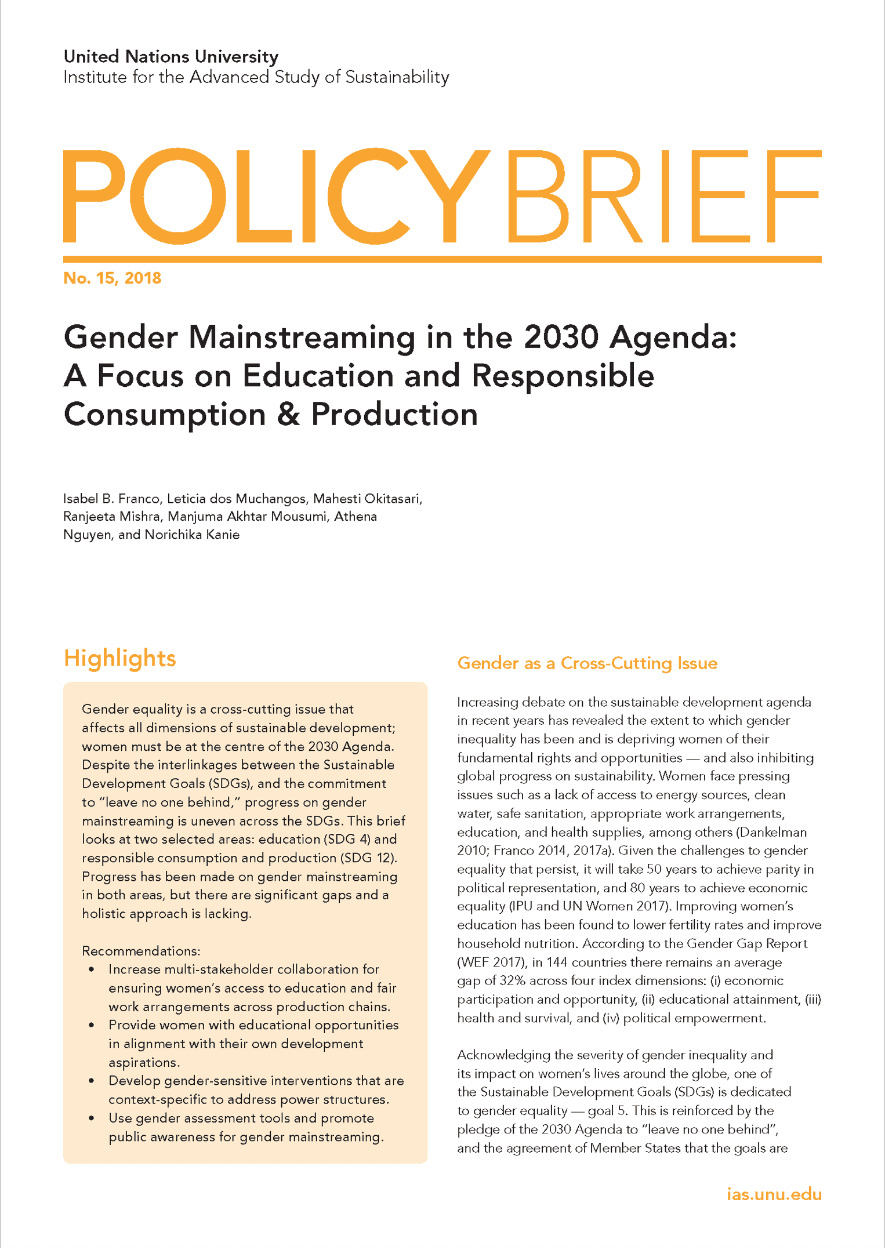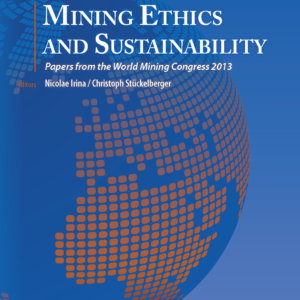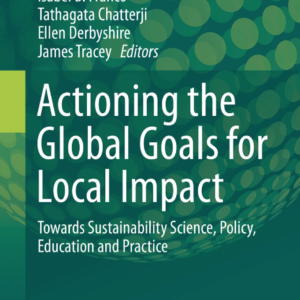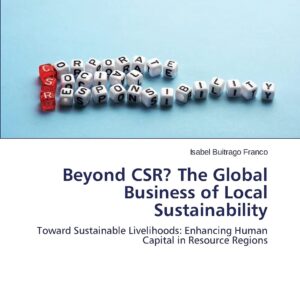Description
Partners: United Nations University – Institute for the Advanced Study of Sustainability; BRAC University Bangladesh
Impact: Gender equality is a cross cutting issue that affects all dimensions of sustainable development; it is clear that women must be at the center of the 2030 Agenda. Despite the clear links between the Sustainable Development Goals (SDGs), and the commitment to “leave no one behind,” progress on gender mainstreaming seems to be uneven across the SDGs. This article specifically analyzes the links between Gender Equality (SDG 5) and both Education (SDG 4), and Responsible Consumption and Production (SDG 12).
Although improving women’s education has been found to lower fertility rates and improve household nutrition according to scholarly literature, it will take 50 years to achieve gender parity in political representation, and 80 years to achieve economic equality. Furthermore, according to the Gender Gap Report, in 144 countries there remains an average gap of 32% across the four index dimensions: (i) economic participation and opportunity, (ii) educational attainment, (iii) health and survival, and (iv) political empowerment.
Placing women at the center of the 2030 Agenda requires stronger links between the SDGs and a real commitment to investing wisely in women’s capacities to cope with pervasive sustainability challenges. Whilst we have seen remarkable advances in gender parity in education, the overall progress towards achieving SDG 5 has been less impressive. Evidently efforts have been made to connect goals 4 and 5, resulting in more equitable and quality learning, creation of lifelong opportunities, and women’s empowerment for the economy. There is also evidence to suggest a link between goals 5 and 12 — for example, when women have secure land rights, production is more sustainable and efficient. But few attempts have been made to connect these two areas in practice.




